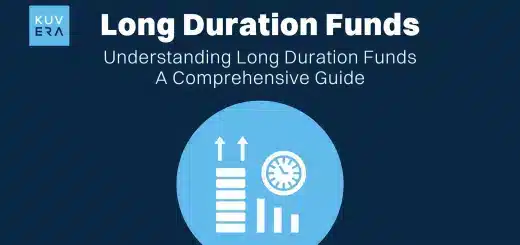The Indian investment landscape has witnessed a remarkable shift towards passive investment India in recent years. Once dominated by active fund management, passive investment India strategies, particularly index funds or index investing and Exchange Traded Funds (ETFs), have gained significant traction. This evolution is driven by factors such as increasing investor awareness, technological advancements, and the recognition of the long-term benefits of passive investing. As a result, the Indian passive fund industry has experienced rapid growth, offering investors a diverse range of options to align their investments with market benchmarks and achieve long-term financial goals.
As investors become more aware of the benefits of this investment strategy, passive funds have emerged as a popular choice.
Let us dive into the top ten benefits of investing in passive funds in India:
1. Lower Expense Ratios
Passive funds, such as index funds and ETFs and Fund of funds (FoFs), typically have lower expense ratios compared to actively managed funds. This means you pay lower fees, which can significantly impact your long-term returns. This is mostly because of the lesser dependency on fund manager’s decisions, since they simply have to mirror an index for composition, rebalancing and returns.
2. Lower Volatility
Passive funds India tend to be less volatile than actively managed funds. This is because they track a specific index, which provides a more diversified and stable passive investment India approach. Here are some of the key reasons:
– Index Tracking
Passive funds, like index funds, FoFs and ETFs, aim to replicate the performance of a specific market index. This means they invest in a diversified basket of securities that closely mirrors the composition of the index. By tracking a well-diversified index, passive funds reduce the impact of individual stock fluctuations on overall portfolio performance.
– Reduced Trading Activity
Active funds often involve frequent buying and selling of securities as fund managers try to time the market and identify undervalued stocks. This active trading can lead to higher transaction costs and increased volatility. In contrast, passive funds typically have lower trading costs due to their buy-and-hold strategy.
– Lower Risk Profile
By avoiding the risks associated with active management, such as market timing and stock picking, passive funds can offer a more consistent and less volatile investment experience.
However, it is important to note that while passive funds generally exhibit lower volatility, they are not entirely risk-free. Market fluctuations and economic conditions can still impact the performance of these funds.
3. Investments Across Asset Classes
Passive funds India can help you cover different asset classes for your portfolio, just like active funds. Here are a few asset examples:
A. Equity
– Index Funds
These track a specific stock market index like the Nifty 50 or Sensex, providing broad exposure to the Indian equity market.
– Thematic ETFs
These ETFs focus on specific themes like technology, healthcare, or renewable energy, allowing investors to invest in particular sectors.
B. Debt
– Bond ETFs
These track various bond indices, offering exposure to government bonds, corporate bonds, or a mix of both. This helps diversify your portfolio and reduce risk.
C. Gold
– Gold ETFs
These track the price of gold, providing a convenient way to invest in gold without the physical hassles.
D. International Equities
– International ETFs
These ETFs invest in stocks of companies listed on foreign stock exchanges, providing global diversification.
E. Fund of Funds (FoFs)
These funds invest in a basket of other funds, typically index funds or ETFs. FoFs can provide diversified exposure to various asset classes and fund managers, making it a convenient way to invest in a diversified portfolio.
4. Professional Management
While passive funds are not actively managed, they are professionally managed by experienced fund managers. These managers ensure that the fund’s portfolio aligns with the underlying index. However, the reliance on the fund manager for fund’s returns is not there.
5. Diversification
Passive funds offer diversification by investing in a wide range of securities. This helps to spread risk and reduce the impact of any individual stock or sector’s performance.
6. Transparency
Passive funds are highly transparent, as they track specific indices. This allows investors to easily understand the fund’s holdings and investment strategy.
7. Accessibility
Passive funds are easily accessible to investors of all sizes. They can be purchased through various platforms, including online brokers and mutual fund distributors.
8. Long-Term Performance Potential
Historically, passive funds have outperformed actively managed funds over the long term. This is because they avoid the pitfalls of active management, such as market timing and stock picking.
9. Simplicity
Investing in passive funds is a simple and straightforward process. You do not need to worry about complex investment strategies or market timing.
10. Alignment with Market Returns
Passive funds aim to replicate the performance of a specific index. This means that your returns are closely aligned with the overall market performance.
The Evolution of Passive Investing in India
In recent years, passive investing has gained significant momentum in India. The launch of new index funds and ETFs by various asset management companies has made it easier for investors to access this investment strategy. Additionally, the recent launch of a new website by the National Stock Exchange (NSE) dedicated to passive investments and the introduction of new indices by the Bombay Stock Exchange (BSE) have further fueled the growth of passive investing in India.
Beyond Traditional Index Funds: FoFs and Smart Beta Funds
While traditional index funds track a specific market index, passive investing has evolved to include more sophisticated strategies.
1. Funds of Funds (FoFs)
These funds invest in a basket of other funds, providing diversification across asset classes and investment styles. FoFs can be a good option for investors who want to diversify their portfolio without having to do extensive research on individual funds.
2. Smart Beta Funds
These funds use quantitative strategies to select stocks based on factors like value, momentum, and low volatility. Smart beta funds aim to outperform traditional index funds by capturing specific market factors.
By understanding the benefits of passive funds, including traditional index funds, FoFs, and smart beta funds, and incorporating them into your investment strategy, you can achieve your long-term financial goals.
Wrapping Up
A closer look at the sectoral composition of various NSE and BSE indices reveals that sectors like Financial Services, Technology, Consumer Goods, and Healthcare are major contributors to the Indian stock market. Passive funds India, particularly those tracking broad market indices like the Nifty 500 and S&P BSE 500, offer exposure to these key sectors.
By understanding the sectoral diversification offered by different passive funds India, investors can make informed decisions and build well-rounded portfolios. As the Indian economy continues to grow and evolve, the role of passive funds India in shaping the investment landscape is likely to increase. By leveraging the power of passive investment India strategy, investors can achieve their long-term financial goals through passive funds India.
Interested in how we think about the markets?
Read more: Zen And The Art Of Investing
Watch here: Is UPI Killing the Toffee Business?












